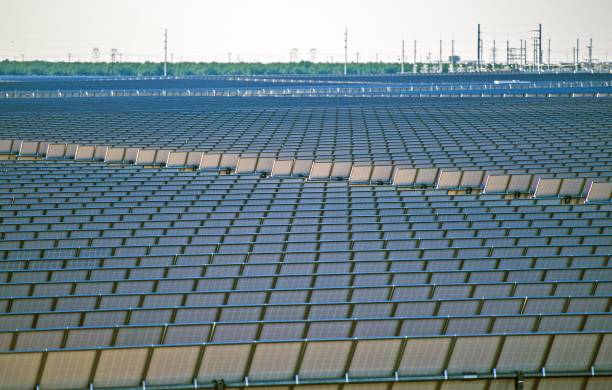
Grid operators must make quick daily decisions to balance the grid because our energy needs are constantly changing. It can be on hot summer days when people turn on their air conditioners or during the winter when they heat up. Grid operators will have to find a solution for rapid increases in energy demand.
Most concentrating solar thermal (CSP) systems now have energy storage. This acts as a battery in the plant, allowing utilities to use solar power when needed. Grid flexibility is created when grid operators can choose the best power source. CSP becomes a valuable asset to our grid as the grid needs to evolve.
Despite steady developments in CSP technology, further innovation is needed to use high-tech components in holistically-designed systems that can rapidly and flexibly respond to consumer energy demands at low costs. The Solar Energy Technologies Office (SETO) CSP Research Program supports developments in these fields that could increase grid flexibility.
CONCENTRATING SOLAR POWER 101
CSP systems use thermal energy from the Sun to produce electricity or heat. Modern CSP systems use heliostats, fields of mirrors that reflect and focus sunlight onto a receiver atop a tower. The receiver is filled with a heat-transfer fluid heated to 565 degrees Celsius, which then circulates throughout the system to power a power cycle. The thermal energy stored in tanks can quickly and effectively meet the energy demand, not only when the sun shines. CSP plants can operate independently without needing backup fuel, much like conventional power plants.
SIZE MATTERS: FLEXIBLE PLANT ARRANGEMENTS CAN MEET A VARIETY OF NEEDS
CSP can be a flexible resource that adapts to changing electricity needs. The smaller systems with lower upfront costs can provide peak power, while the larger systems with a large amount of storage time will provide a baseload.
CSP systems consist of similar components: mirrors that collect and focus sunlight, receivers that capture and transfer the energy to a heat-transfer fluid, thermal storage tanks, and a power block to convert it into electricity. One 50-megawatt CSP plant, for example, can be configured to function as a peaker plant that stores energy for less than six hours. This plant can be used as a supplement to baseload generation during sudden spikes in energy demand. The same plant, with a mirror field that is much larger and more storage than 12 hours, can be used to generate baseload electricity.
The Energy Department’s Solar Office is focused on the research and technology needed to make CSP cost-competitive. Cost targets for CSP baseload and peaker plants are helping the solar industry keep up with funding opportunities focusing on rapid development. Solar Dynamics is, for instance, already investigating the feasibility of a modular molten salt tower peaker plant that can be quickly replicated in less than 24 months.
The GRID is more stable with both spinning and non-spinning reserves.
CSP provides grid stabilization due to its use of a spinning, conventional turbine, which adds inertia. Utility companies and independent system operators are responsible for meeting the energy demands of their customers. When there are sudden changes in direction, utilities must ensure the grid is stable.
To meet these needs, utilities, ISOs, and other service providers manage voltage and frequency regulation, spinning reserves (already online energy synchronized with the grid frequency), and short-circuit power. It is easier to maintain the system frequency and dispatch more energy. CSP can provide spinning reserves to meet immediate needs and nonspinning accounts for near-term requirements, giving grid operators more flexibility and control in ensuring reliability.
Put a more accurate price tag on reliability benefits.
CSP’s most significant advantages are its reliability and predictability as an energy resource. There is no need to mine, transport, burn, or store waste. Instead, sunlight is a free, abundant, and unending resource. The “fuel” being free makes costs predictable for the plant’s life and maintenance. Over 60% of a CSP plant’s operating costs occur in the first year. This allows investors better to understand the long-term cost and return on investment.
SETO funds an open-source simulation and modeling tool to optimize CSP plant operations and design. This project takes into account maintenance, field exposure, and even solar generation uncertainty, helping project developers optimize the performance of a CSP plant that will last more than 30 years.
This new vision of CSP technology will help grid operators balance the grid better, maximize their energy resources and plan better for future energy requirements. Grid operators can make better decisions with this increased flexibility, which ensures the grid is resilient and secure.
CSP technology is evolving daily as the nation’s energy needs do. Although further innovations will be needed to create low-cost, integrated systems, SETO’s research foundations — like the Gen 3 CSP Systems Funding Opportunity — will allow CSP technology to reach new heights. The flexibility and predictability of CSP will allow it to meet our energy needs in the future.
